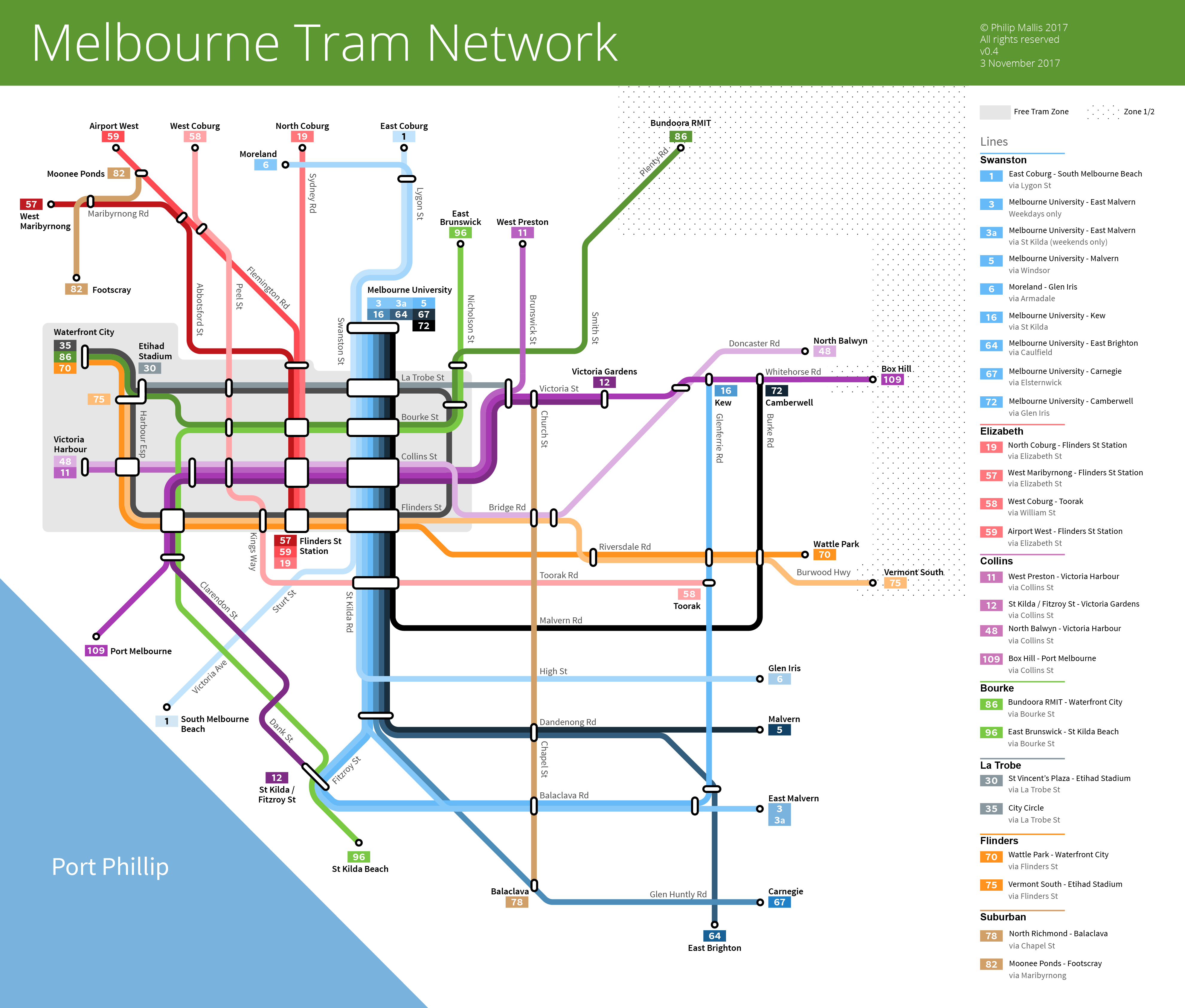Earlier this year, Yarra Trams and Public Transport Victoria (PTV) released a new map for Melbourne’s tram network. At the time, I was already working on this new version of my own.
This new map by PTV is a large improvement on the old one. Lines are more legible, the map is smaller and it uses standardised angles.
As a result of this release, I stopped working on my version. But recently I decided to finish this project anyway; if for no other reason, for the sake of not having folders full of unfinished maps on my hard drive.

